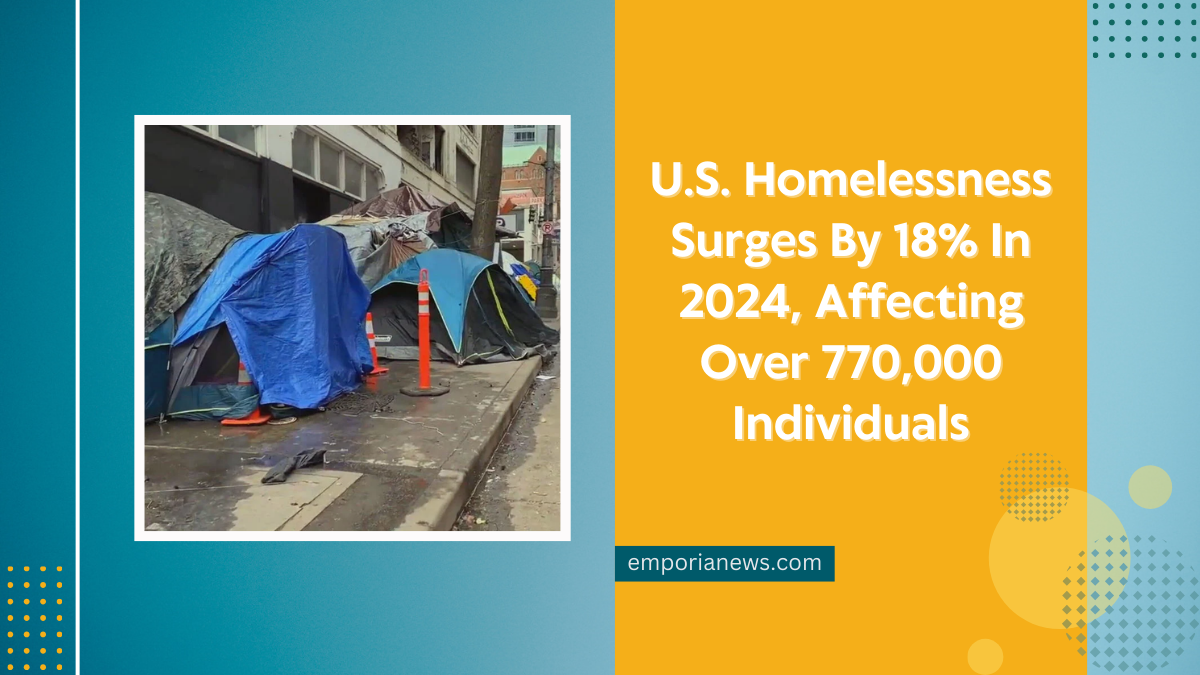In 2024, the United States witnessed a significant rise in homelessness, with numbers increasing by 18.1% compared to the previous year. This surge has brought the total count to over 770,000 individuals experiencing homelessness nationwide.
Factors Contributing to the Increase
The primary drivers behind this alarming trend include a shortage of affordable housing, natural disasters, and an influx of migrants in various regions.
The U.S. Department of Housing and Urban Development (HUD) notes that these factors have exacerbated the homelessness crisis, leaving many without stable shelter.
Impact on Families and Children
One of the most concerning aspects of this increase is its effect on families and children. Family homelessness has risen by nearly 40%, with approximately 150,000 children experiencing homelessness on a single night in 2024—a 33% increase from the previous year.
Cities like Denver, Chicago, and New York City have reported significant upticks in family homelessness, partly due to the arrival of migrants seeking asylum.
Natural Disasters’ Role
Natural disasters have also played a substantial role in the rising homelessness figures. The catastrophic wildfire in Maui, the deadliest U.S. wildfire in over a century, led to more than 5,200 individuals seeking refuge in emergency shelters in Hawaii during the count.
Such events have displaced thousands, further straining the already limited resources available for homeless populations.
Demographic Disparities
The data reveals significant demographic disparities within the homeless population. Black individuals, who constitute 12% of the U.S. population, represent 32% of all people experiencing homelessness.
This overrepresentation highlights systemic issues contributing to housing instability among minority communities.
Veteran Homelessness Declines
Amidst the overall increase, there is a positive development concerning veteran homelessness. The number of homeless veterans decreased by 8% to 32,882 in 2024, marking the lowest figure on record.
This decline is attributed to targeted programs and bipartisan support aimed at providing housing solutions for veterans.
Homelessness Statistics by Demographic Groups
| Demographic Group | Percentage of U.S. Population | Percentage of Homeless Population | Increase from Previous Year |
|---|---|---|---|
| Black Individuals | 12% | 32% | Significant |
| Families | N/A | N/A | Nearly 40% |
| Children | N/A | N/A | 33% |
| Veterans | N/A | N/A | Decreased by 8% |
Policy Responses and Challenges
In response to the growing crisis, several communities, particularly in Western states, have implemented stricter measures, including enforcing bans on camping in public spaces. This follows a Supreme Court ruling earlier this year that upheld such bans, stating they do not violate the Eighth Amendment.
However, advocates argue that punitive measures fail to address the root causes of homelessness and may further marginalize vulnerable populations.
Conclusion
The 2024 increase in homelessness underscores the urgent need for comprehensive strategies to tackle the underlying issues of affordable housing shortages, economic disparities, and the impacts of natural disasters.
While progress has been made in reducing veteran homelessness, a concerted effort involving federal investment, policy reforms, and community engagement is essential to effectively address and mitigate the broader homelessness crisis in the United States.
FAQs
What are the main causes of the recent increase in homelessness?
The primary factors include a lack of affordable housing, natural disasters displacing residents, and an influx of migrants in certain areas.
How has family homelessness been affected in 2024?
Family homelessness has increased by nearly 40%, with approximately 150,000 children experiencing homelessness on a single night—a 33% rise from the previous year.
Which demographic is overrepresented in the homeless population?
Black individuals are notably overrepresented, constituting 12% of the U.S. population but 32% of the homeless population.
Have there been any improvements in homelessness statistics?
Yes, veteran homelessness has declined by 8% in 2024, reaching the lowest number on record at 32,882 individuals.
What policy measures are being implemented to address homelessness?
Some communities are enforcing bans on public camping following a Supreme Court ruling. However, advocates emphasize the need for comprehensive solutions focusing on affordable housing and supportive services.




